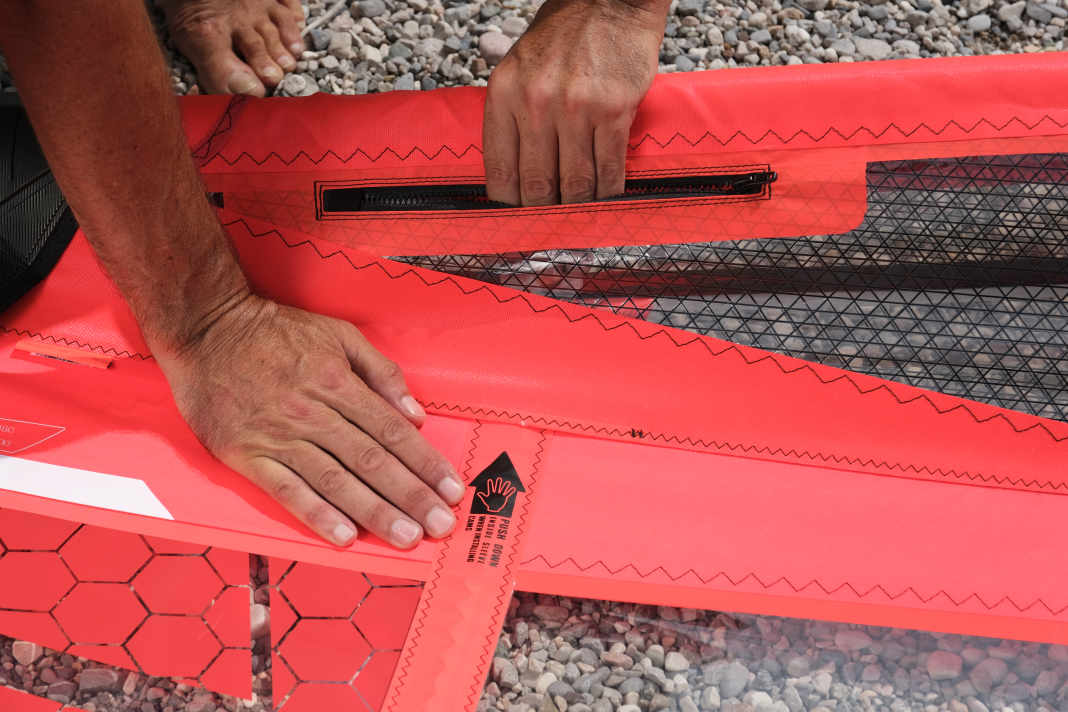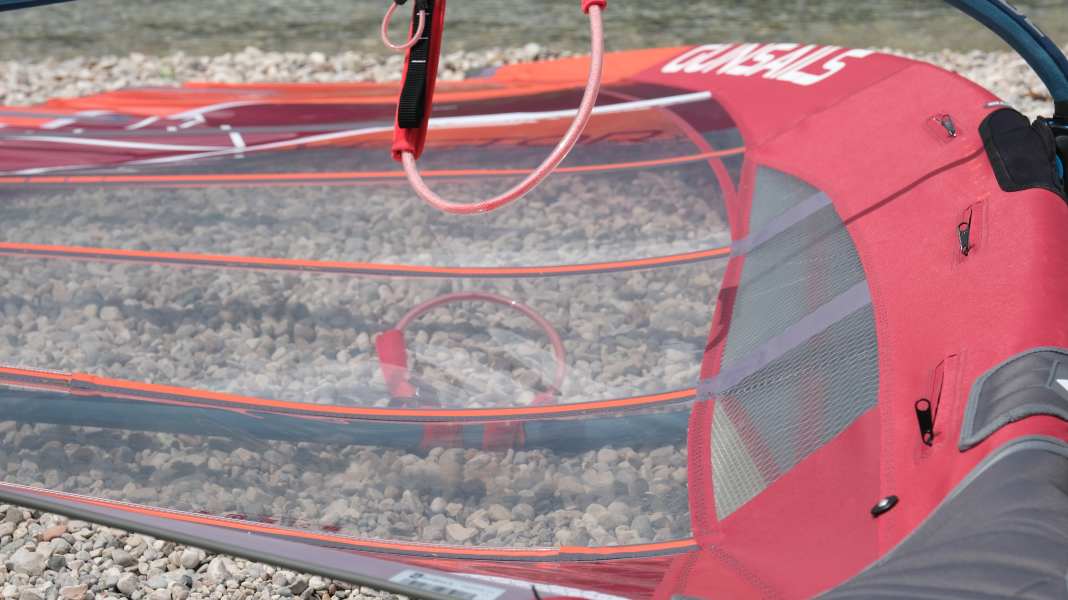
Camber sails naturally have a lot of details and features to offer. The current test sails are no exception. In the following photo galleries we show many features of the sails from the current test in surf 9-2024.
Duotone S_Pace 7.8 SLS
The "S_Pace" sail model has a very wide mast sleeve at the bottom, which gradually transitions into a more or less normal mast sleeve at the fourth batten from the bottom, but the mast sleeve remains relatively wide overall up to the top end. The sail is equipped with three cambers that can be adjusted to the mast when tensioned using the supplied Mini-Torx. The sail has a very short cut-out with a maximum boom width of 2.18 metres. The upper eyelet is recommended for finsurfing, while the lower eyelet is suitable for foiling. The cross batten is protected, but the protruding end of the batten is not additionally secured. The sail is predominantly made of mono film, with a fairly thick X-Ply being used in the lower foot area. The upper mono film is coloured and has two trim points. Due to the low trim forces, there is a risk of over-trimming if you do not pull sensitively. Inside the mast sleeve there is a system, similar to Ezzy sails, at the bottom of the base plate to ensure correct luff detection tension - in addition to the trim aid points. The mast ends at the top in a robust plastic cap, which should also withstand rough tarmac.
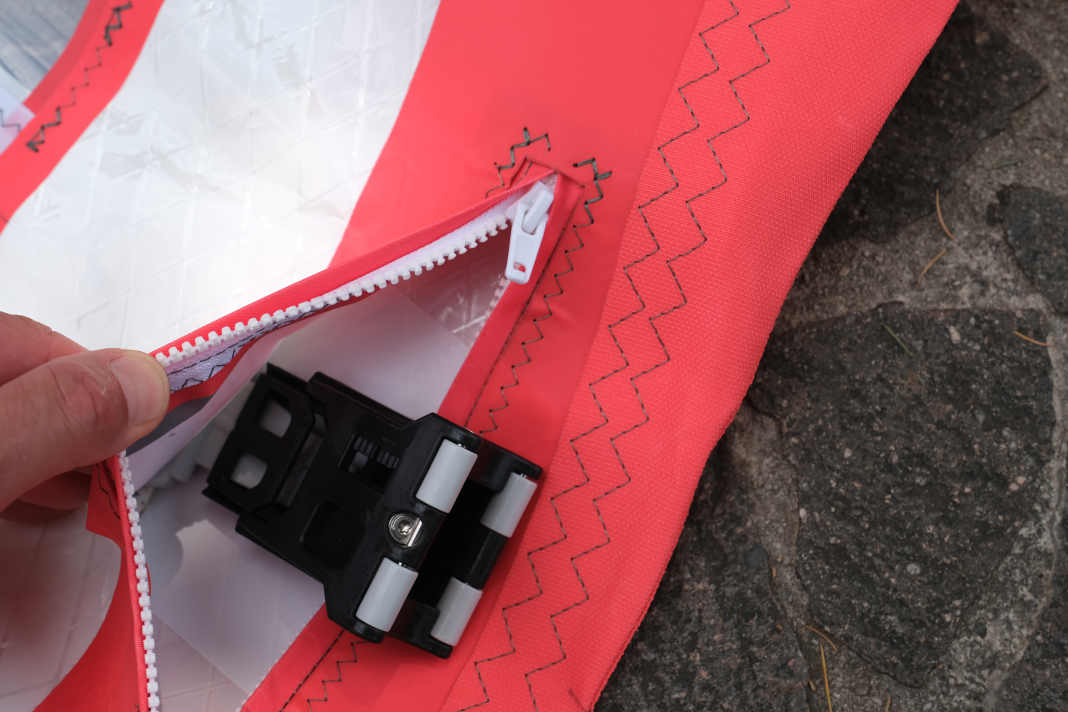





GA-Sails Cosmic 7.7
From a distance, the GA sail looks very robust thanks to the dark-coloured mono film. A closer look reveals that more X-Ply has been used than in some other models, especially in the lower leech, leech and the entire luff track. The shiny metallic mast sleeve material is also very visually appealing. The camber is large and wraps around the mast. They can be adjusted using spacers. The two eyelets on the outhaul are reinforced with webbing and are designed to provide both power (at the bottom) and control (at the top). Both the lower leech and the diagonal batten are protected with rubber strips. Overall, the sail makes a reinforced impression appropriate to the area of use, as with comparable models. The mast ends at the top in a top with a PIN system, which is robustly protected by a cap and a rubber strip. At the lower end, the protector extends particularly far down and can be easily folded up. What looks like particularly thick padding is actually due to a clever design that creates this 3D effect. The material of the protector is actually quite thin, but the protruding structures still offer at least adequate protection.






GunSails Vector 7.8
The Vector is the heaviest sail on the scale, which is mainly due to the thicker material used throughout, which ensures increased durability. The sail is characterised by its particularly solid workmanship, such as the mono film used in the leech or the rubber strips on the diagonal batten, the lowest sail panel and in the lower leech. The top cap is made of plastic, similar to Duotone, whereby the side strap can lie on the tarmac. A small additional strap, which is clamped into the top cap, is designed to prevent this. The Vector has the widest mast sleeve, which fits the three camber well. The sail has a trim aid point that works well and requires significantly higher trim forces than the GA and Duotone sails, although they do not quite match those of the V8. On the leech, the batten tensioner is part of the edge protection, while there are sewn-on reinforcements on the other side. The turned roller block at the lower end of the sail is equipped with three rollers and there is an additional tack strap for tensioning the lower leech. The thick protector can be folded up easily and extends very far down. The two optional eyelets on the outhaul vary in boom length rather than height, similar to NeilPryde. Despite a boom length of 2.16 metres, the sail has a large cut-out, which increases the maximum net boom length.
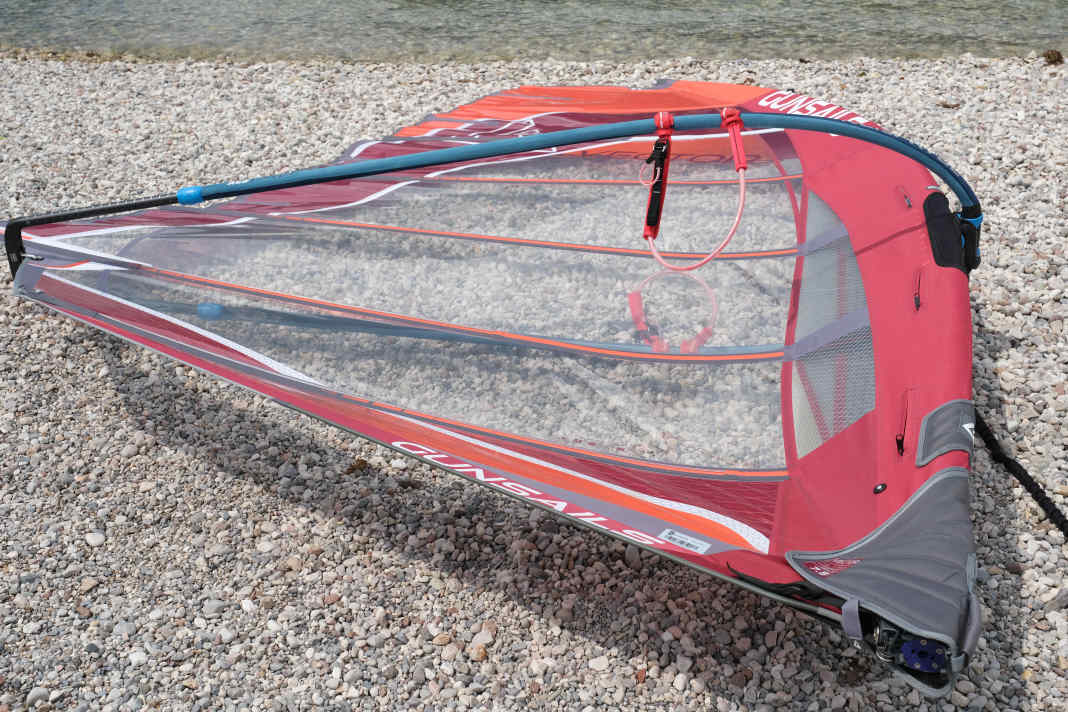





NeilPryde V8 7.7
The "V8" sail model is made of coloured or clear mono film, with the exception of the luff and some foot areas. The sail has two small roller cambers, which are not adjustable, but sit well and relatively tightly on the mast. The roller block at the lower end of the sail is sewn on as normal and the protector is well padded. A large grip loop makes it easier to pull the sail onto the mast, as with all comparable models. The two eyelets on the outhaul are only about 2 cm apart, which is significantly less than on Severne or Duotone models. The top of the mast is solidly reinforced and the batten tensioners protect the leech so that no additional reinforcement is required on the side. However, the backs of the tensioners are reinforced. The diagonal batten is not fitted with an additional rubber moulding. The batten tensioners can be adjusted without tools with suitably practised fingers. Both cambers are located above and below the boom, which differs from Severne's arrangement.
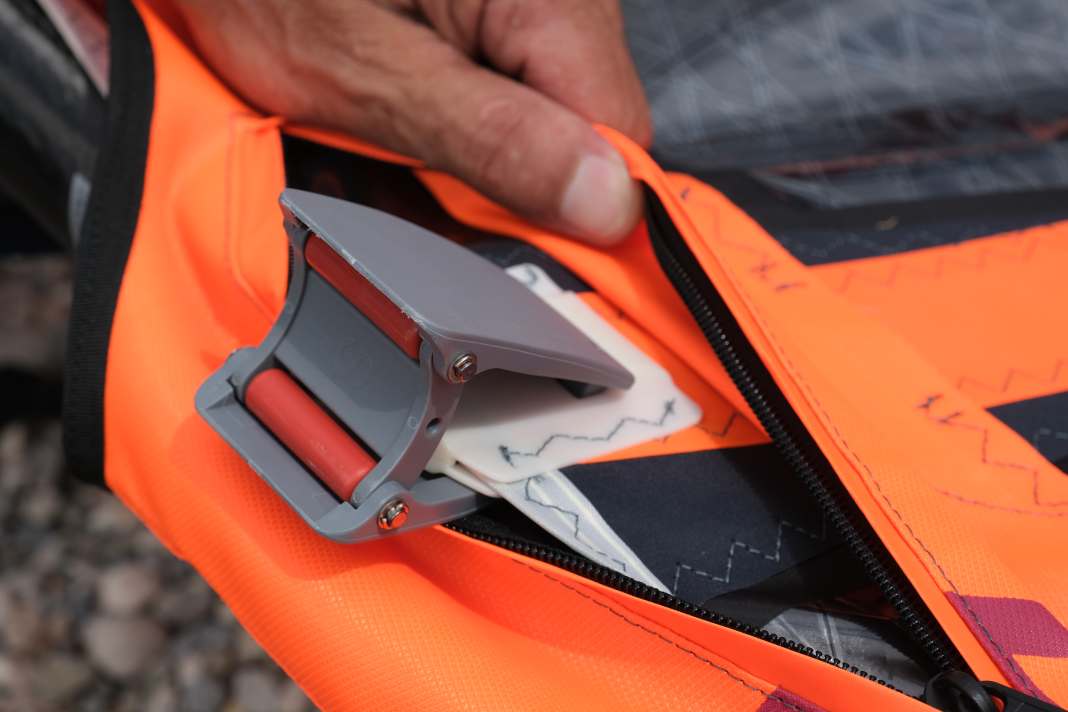





Severne Moto 7.8
The "Severne Moto" is made almost entirely of coloured mono film, with a particularly thick layer used in the lower foot area. The batten that runs through the boom is protected with a rubber moulding; this also applies to the protruding end of the batten. The camber is clearly visible in the transparent X-Ply mast sleeve. In this case, these are RDM camber, which can be adjusted with a spacer. The sail only has two cambers, but it looks as if a camber has also been installed on the third batten from below; the wide mast sleeve is also beautifully designed at this point. The cut-out in the mast sleeve is large enough to easily reach the boom. The protector is relatively short, so that it does not completely cover the base plate when trimmed correctly (about 1 cm clearance downwards). There are no trim points or other visual aids to assist with trimming. The sail consists of relatively few panels. When furling the sail, care must be taken to ensure that it is furled differently to conventional sails. This means that booms with a normal orientation do not fit well with this sail, which makes it difficult to install unless you have a boom specially made for Severne. The roller block at the lower end of the sail has four rollers, which is only suitable for use with the Severne extension; it is also not possible to loop through a Power XT extension, for example. The sail is equipped with two eyelets, the upper one being the main eyelet; the boom specification also refers to the upper eyelet. The boom is particularly short for this sail class. The top of the mast sleeve is designed without a plug and is sewn shut.
